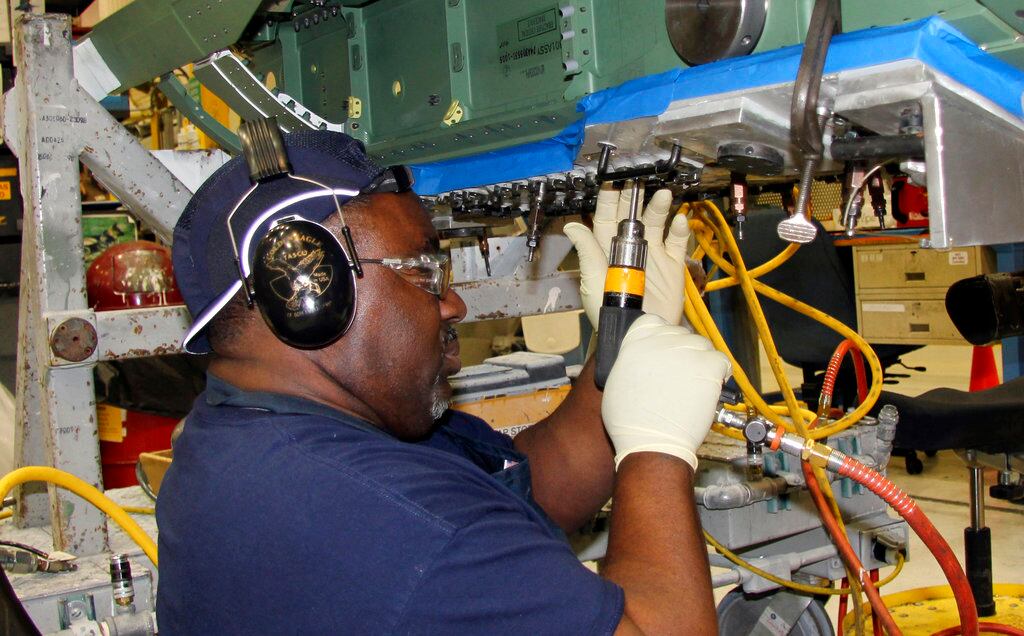WASHINGTON ― A key House Democrat will propose a billion-dollar pandemic response and preparedness fund in the annual defense policy bill, Defense News has learned. The bill would help boost production of key medical equipment sought by states amid the country’s fight against the coronavirus pandemic.
House Armed Services Committee Chairman Adam Smith, D-Wash., will include the measure in his committee’s version of the 2021 National Defense Authorization Act as a means to strengthen the Department of Defense and the country’s ability to respond to a potential COVID-19 resurgence and other future infectious diseases, according to a House aide familiar with the proposal.
The proposal comes as Smith and other Democrats have criticized President Donald Trump as neither sufficiently marshaling American industry to produce medical equipment like swabs, masks and ventilators, nor coordinating with states on their needs. Still, Trump has partially invoked the Defense Production Act, and the Pentagon has had a central role awarding millions of dollars in contracts to address shortages for these items.
“Looking forward, I intend to include in this year’s National Defense Authorization Act an effort to proactively look beyond the response to COVID-19 and increase preparedness and resilience for future pandemics,” Smith said in prepared remarks for Wednesday’s HASC hearing on the DoD’s efforts to mitigate the effects of the coronavirus pandemic.
The U.S. military, Smith said, “has a unique ability to lead” in efforts to ramp up domestic production of key equipment, “given its experience in acquisition and stockpile management that has already been a deep resource to the federal government response.”
RELATED

At that hearing, Undersecretary of Defense for Acquisition and Sustainment Ellen Lord is expected to testify that the DoD’s Joint Acquisition Task Force has executed $284 million of a planned $312 million for medical resources ― and that there have been challenges in reducing America’s dependence on overseas suppliers.
“Reconstituting domestic production or creating new production that shifted offshore years ago often requires capital equipment expenditures, retooling, and re-training of the workforce,” Lord said in her prepared testimony. “It can be months before a supplier is fully capable of producing components or end-items at scale, and these timelines are taken into account when reviewing projects to ensure production increases align to prospective needs of medical items.”
Major elements of Smith’s proposal will aim to strengthen the small business supply chain for essential gear like personal protective equipment; improve the DoD’s ability to rapidly acquire and manufacture response supplies using the organic industrial base; and increase DoD research funding for infectious disease detection, treatment and response technologies. Details of the proposal are expected to be released publicly with the bill in late June.
The billion dollars for the fund would come from unspecified, “lower priority accounts” in the NDAA, the aide familiar with the proposal told Defense News. (The House and Senate are each expected to propose a $740 billion bill, in line with the most recent bipartisan budget agreement.)
“The monies in this fund were identified through routine reviews of [the president’s fiscal 2021] budget requests. The COVID crisis has made clear the need for a more aggressive effort to prepare for and enhance resilience in the face of future pandemics,” the aide said. “The approximate $1 billion is less than one-seventh of a percent of the overall DoD budget [request].”

If passed into law, the legislation would seem to hand the Defense Department a mission of supporting domestic health care, which falls outside of its traditional responsibilities, said Todd Harrison, a defense budget analyst with the Center for Strategic and International Studies.
“It’s not been a core area for DoD, but the reason people tend to turn to DoD in times like this is the military has the manpower and logistics infrastructure to mobilize and bring a lot of people to a problem very quickly: Do contact tracing, do testing, set up field hospitals,” Harrison said. “Plus, the NDAA is a must-pass piece of legislation every single year, so if you want something funded, you put it in and it will at least get a vote.”
The Trump administration has been criticized for a delayed response to the outbreak and a lack of organization in providing tests and medical supplies. Smith, who steers the House version of the NDAA, has telegraphed for weeks that he might pursue action. He has already sent Trump a letter, signed by himself as well as House Energy and Commerce Committee Chairman Frank Pallone, D-N.J., and House Homeland Security Committee Chairman Bennie Thompson, D-Miss., calling for a clear federal strategy to procure medical supplies and the aggregation of the country’s needs.
“100,000 deaths in the U.S. from #COVID19,” Smith said in a May 27 tweet. “Yet we still do not have an adequate national testing plan. We are still failing to use the full force of the Defense Production Act to produce the supplies we need.”
On July 1, HASC is expected to mark up its version of the NDAA. The Senate Armed Services Committee this week began closed-door consideration of its version of the NDAA, which is typically reconciled with the House’s bill.
Because the NDAA is the authorization bill, Congress would have to follow suit in appropriations bills for Smith’s forthcoming pandemic response and preparedness proposal to receive funding.
Joe Gould was the senior Pentagon reporter for Defense News, covering the intersection of national security policy, politics and the defense industry. He had previously served as Congress reporter.






